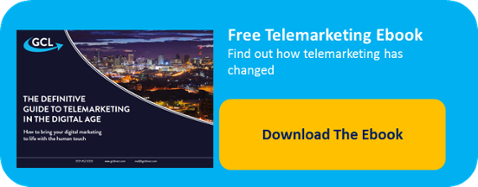
The world of marketing is changing faster than ever before and many marketers are asking if buying data lists is still relevant?
Some would argue that with the advent of digital we should all be building our own databases by driving client engagement with our custom content. However, how reliable is this method and what are the advantages of it over bought in data? We've taken a look at a number of different methods to grow your database and reviewed them based on timescales, cost, engagement and reliability.
The All Digital Approach
Talk to any evangelical digital marketing guru and they will tell you that the only way to expand your prospect database is to grow it organically by exchanging engaging content for prospects contact details.
The big positive with this method of data generation is that you know the prospects that provide their details are interested enough in what you do to download your content.
However to grow a database from scratch using this method takes a long time and is completely reliant on how well you distribute your content. Although on the face of it this method may seem cheaper than buying a list it does rely entirely on the production of outstanding content and the SEO/SEM/PPC clout to attract prospects to your website. Depending on how much you currently spend on these digital aspects it may require extra investment to generate the required traffic.
The final consideration is the reliability of the data; you may believe that as people enter their own contact details they are more likely to be correct. However, how many of us have changed a digit when entering a phone number in an online form to avoid the follow up call? More than you may think, some statistics put it as high as 80%! Unlike a bought list 0% of the data will have been validated by phone or email.
Buying In Data Lists
Buying B2B Data is a minefield; there are a number of tricks and best practices that can help, however, it all comes down to how and when the data was originally collected. To make it even more complex a revision to the EU Data Protection Regulations is about to change things again and could even bring an end to reselling data altogether (read our article on Opt In data).
The key thing with buying a B2B Data list is to buy it from a trustworthy source be that a broker or the data owner the best bet is to use one affiliated with a professional body such as the DMA (www.DMA.org.uk).
The biggest problem with bought in data is that it is cold therefore do not expect as much engagement compared to the digitally generated data. The typical engagement rate for a one off email broadcast or telemarketing campaign using cold data is no greater than 15%.
The timescale is of course instant as you can buy and use it, in some cases on the same day. Cost can be anywhere between £0.05 per record to over £5.00 a record depending on how specialist the contacts are. The reliability is all down to the supplier however a good supplier will guarantee an accuracy rate of 95%.
The Middle Ground
If you don’t want to wait around for your data grow organically by letting people find your content you can use a bought in list to drive prospects to your content and therefore boost engagement. This method only really works with a reliable automation platform where you can track a prospects interaction with your digital assets.
The benefits are that this solution is quick to implement, provides you with accurate contact data and will drive prospect engagement. However, cost wise it requires both the purchase of data and the creation and curation of quality content (not to mention a marketing automation system).
Bespoke List Build
The final option we have considered is to commission the building of a bespoke data list. Using a combination of internet research and telephone verification, bespoke contact lists can be built to target specific job roles or sectors. For some campaigns this is the only option where a specific type of contact is required in a short timescale.
The data will still take time to assemble and in terms of cost it will not be cheap as both the base data and the time to build it will cost money. However, as the data is specially built it can be guaranteed to be reliable and engagement will be slightly higher than with a standard list.
To Sum Up
Whether we build, buy or use a combination of them both it all comes down to what we want to do with the data. If for example the main objective is to generate more leads quickly then spending some money and buying a one off list is probably the answer. However, if you wanted to increase your long term sales pipeline then a combined approach would be the better solution utilising both existing and new data to drive content engagement and create a reliable database.








